A month ago as EAA AirVenture Oshkosh 2021 ended, the most popular article from my week of reporting from the big show focused on Composite FX. The Florida producer makes a line of single seat helicopters many pilots could actually afford.
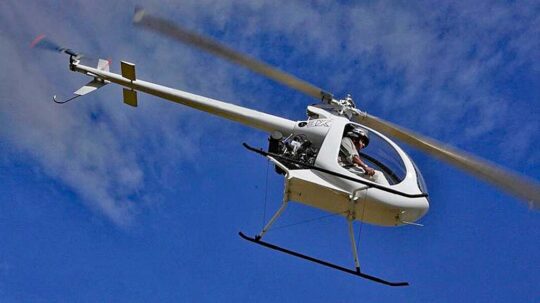 Those words almost don’t belong in the same sentence: “afford” and “helicopter.” Most pilots have little idea how much they cost because they’re seen as expensive and devilishly hard to fly. A Robinson R22, the company’s lowest cost two seater, starts at $325,000.
Those words almost don’t belong in the same sentence: “afford” and “helicopter.” Most pilots have little idea how much they cost because they’re seen as expensive and devilishly hard to fly. A Robinson R22, the company’s lowest cost two seater, starts at $325,000.
So, are all helicopters expensive and difficult to fly? “No,” say Composite FX representatives. As helicopters go, light weight can aid ease of operation. The low mass of Part 103 ultralights can be optimal in some situations but don’t take my word for it. With this article I present two fresh videos about this company and their aircraft.
Part 103 to Turbines
Perhaps you accept that Composite FX’s XEL Part 103 model can legitimately make Part 103 using some lightweight floats — and yes, this is legal and proper, see this FAA document guiding field personnel. That model uses the MZ202 engine.
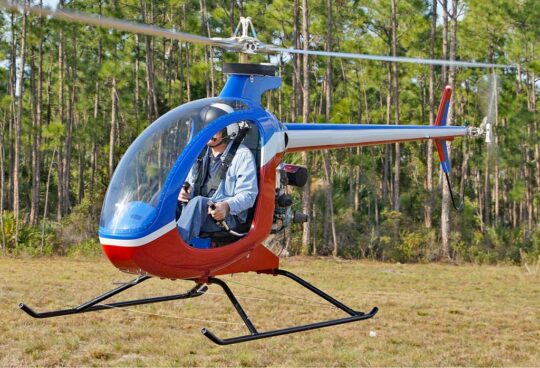 The XE290 is equipped with a more powerful engine, additional fuel, and more instrumentation. Of course, you have to build this one but they can help at the factory.
The XE290 is equipped with a more powerful engine, additional fuel, and more instrumentation. Of course, you have to build this one but they can help at the factory.
Their top-of-the-line is the XET, with “T” for “Turbine.” The factory guys seem most stoked about this and no wonder. All XEs, regardless of model, run their engines at high revs during most of the flight.
Such engine operation and the need to direct power two ways and at two speeds is why original creator John Uptigrove‘s transmission simplification was so important.
Usually, helicopters have a costly, heavy, maintenance-intensive transmission to take some engine power and send it to the tail rotor at a higher speed while the rest is used to power the main rotor at a much lower speed. Instead of gears, Uptigrove substituted cog belts for this transmission. The quality of belts has so improved that they are now considered to be highly dependable. Cogs, like gear teeth, insure against slippage.
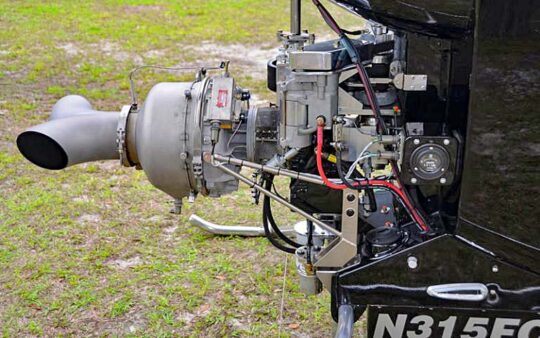
Cog belts must be changed every five years even if they appear to be in excellent condition. To avoid blowouts, semi-truck operators also change tires every five years whether visually needed or not. However, unlike big truck tires, the XE helicopter cog belts are modestly priced around $50, which seems like mighty cheap insurance for such a critical part.
Are They Safe?
First, would you call aviation safe? You probably would and I’d agree. Yet most people looking at our lovely little airplanes suspect we are either crazy or thrill seekers. Are pilots who think helicopters are inherently dangerous equally myopic?
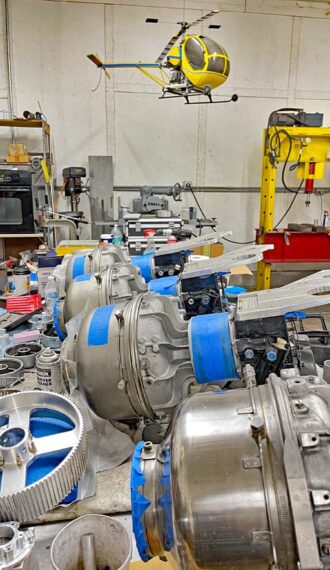
Composite FX‘s engine shop modifies T62-T2A Solar Turbine engines, often used as an APU, or Auxiliary Power Unit. They produce a steady 95 horsepower.
As Norbert explained, the light weight of the aircraft combined with that 19-foot, fast-spinning flywheel called the main rotor can make the action of auto-rotating much easier (though he advises you still have to act within one second of engine failure to maintain rotor speed).
Simplifying, auto-rotating means turning a helicopter into a gyroplane and gliding to a landing.
Learn more by visiting their web page or by viewing the two videos below. Composite FX’s XE line heightened my interest in rotary-winged aircraft. You could be similarly affected.
Helicopter SLSA Coming?
It’s too early to know but FAA’s upcoming regulation may possibly accommodate rotary-winged aircraft — in addition to finally letting gyroplanes qualify as SLSA. As the agency significantly changes the rules for Light-Sport Aircraft, new doors could open.
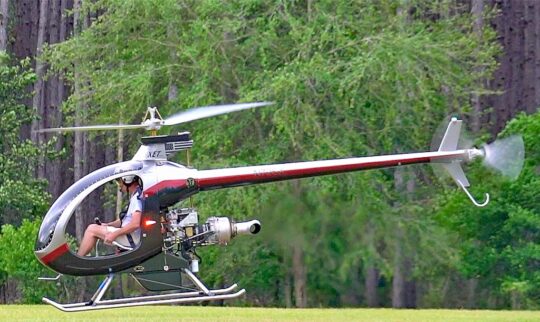
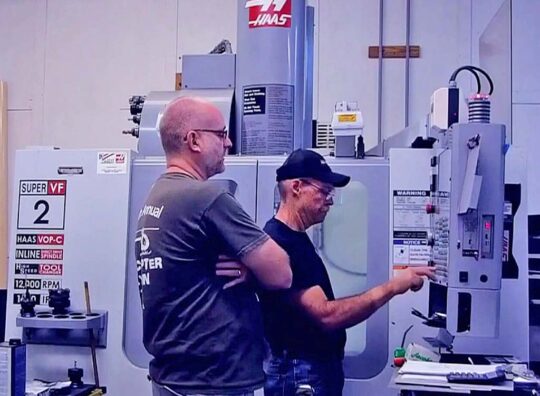
Composite FX’s Norbert Richter observes while a technician programs a CNC machine in their factory.
Another challenge for XET as a SLSA: FAA permitted only piston engines for LSA when they issued their first regulation in 2004. A reason given for this requirement — which regrettably also eliminated any chance of electric propulsion although this will be fixed in the new reg — was to prevent turbine powerplants. They were considered too complex for Sport Pilots. Yet ask any pilot or mechanic with jet engine experience and they’ll say turbines, which spin at very high revolutions, are actually simple to operate.
A company in Australia, TurbAero, has developed a small turbine that could be used on LSA and they have written a proposed ASTM standard for such powerplants.
Maybe in 2024 you could buy a turbine XET ready-to-fly. Now, wouldn’t that be something?
This first video is shorter (6 min.) and introduces you to the XE line of single place helicopters from Composite FX. You also get a close look at some of the hardware innovations that help Composite FX maintain modest prices. You may not believe the aerial “taxiing” you’ll see in this video.
This second video is a full-length interview (14 min.) with factory rep, Norbert Richter. We go through some history of the design and delve into details about construction, operation, and cost. Periodically, while the interview goes on you will be treated to some amazing flight footage. Enjoy!



JE VOUDRAI ACHETE`UN APEREILLE MOSQUITO ON COMMENCE PAR QUOI
I understand you wish to buy an aircraft from Composite FX.
Please make contact with the Composite FX factory.
Veuillez prendre contact avec le Composite FX factory.
I don’t see a price anywhere in the story. Part 103 only has one drawback: instruction in type.
The lead photo seen on the home page has the essentials. In addition the link to a previous article has more price info, BUT — the best such will come direct from the factory.
A second drawback to ultralights is you can not log the time towards other goals. So if you wanted to log time towards becoming a professional helicopter pilot or as a way to lower your insurance rates when you move to larger helicopters, it doesn’t count.
Some might debate the opportunity to log those hours, but in any event, the experience you gain flying in XE would certainly help you in a larger helicopter.
Dan please call me at 9105211004
I regret I cannot return all requests for phone calls. Please help me understand what you want and perhaps I can point you in the right direction.
Dan.
Do you have any updates with videos on the 2 place Rotoway Exec helicopter?
No, Paul, I do not cover certified aircraft. I’m sure someone else has something but I keep a tight focus on LSA, Sport Pilot kits, and ultralights.
I’m 67 years old with approximately 700 hours fixed wing time. I really am thinking about a Mosquito Helicopter but have heard horror stories when it comes to insuring these things but I’ve never spoken to anyone who has one. What have you heard as far as insurance costs? I spoke to a gyro pilot and he said for a gyro it could be as much as $5k on up.
Thanks!
Aviation insurance for all types has risen considerably in the last two years so I don’t doubt insuring an XE helicopter may have extra challenges. However, please contact the factory as they are surely the most knowledgeable about that.